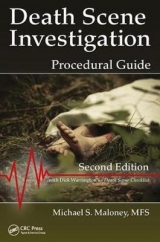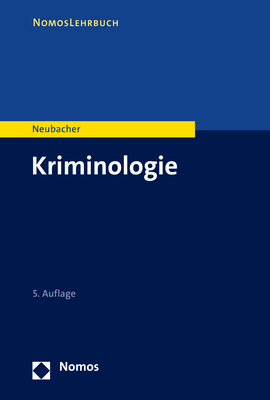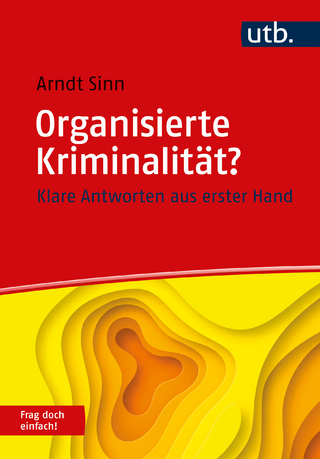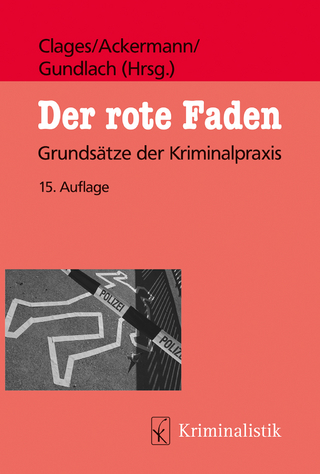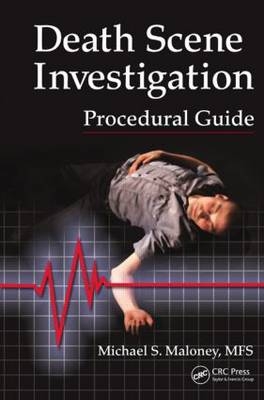
Death Scene Investigation Procedural Guide
Crc Press Inc (Verlag)
978-1-4398-4590-5 (ISBN)
- Titel erscheint in neuer Auflage
- Artikel merken
— Tom Bevel, author of Practical Crime Scene Analysis and Reconstruction and Bloodstain Pattern Analysis with an Introduction to Crime Scene Reconstruction, Third Edition
Those tasked with investigating death scenes come from a variety of backgrounds and varying levels of experience. Death Scene Investigation: Procedural Guide gives the less experienced investigator the procedures for almost any death scene imaginable while providing the seasoned investigator a ready reference for deaths occurring even under the most unusual of circumstances. It details the precise steps that need to be taken when processing and analyzing a death scene to ensure vital evidence is not lost and "red flags" are not missed.
Using a bulleted format for quick and easy access, the book provides hands-on, concise instruction in a style friendly to a range of professionals. Topics discussed in this practical manual include:
Initial response and scene evaluation. This section includes a death investigation decision tree to lead investigators to a preliminary cause of death. The section is broken down into natural, accidental, suicidal, and homicidal deaths. It also explores the role of the medical examiner and autopsy protocol.
Recovery of human remains from open field, aquatic, and buried sites. This section also discusses estimating the time of death.
Wound dynamics and mechanisms of injury. Manners of death include asphyxiation; sharp force, blunt force, and chopping injuries; handgun, rifle, and shotgun wounds; and explosive, thermal, and electrical injuries.
Special death scene investigations. Discussions include child and infant death, sex-related death, and death scenes with multiple victims.
Death scene management. This section covers documentation, sketching, photography and videography, special observations, and search procedures.
Death scene evidence processing. Topics include bloodstain patterns, shooting scenes, and entomological, biological, trace, friction ridge, and impression evidence.
An appendix contains precautions for handling bloodborne pathogens and 15 innovative worksheets for field use are available for download. Death scene responders who master the techniques in this volume will expedite solving the circumstances of the death and the closing of the case.
Michael S. Maloney was interviewed in Volume 13 of Anil Aggrawal's Internet Journal of Forensic Medicine and Toxicology.
Michael S. Maloney is a partner with Bevel, Gardner & Associates. He holds a Master of Forensic Science degree from the George Washington University and he completed a Fellowship in Forensic Medicine from the Armed Forces Institute of Pathology. For 16 years, he served as a Special Agent for the Naval Criminal Investigative Service (NCIS) and spent his last ten years as a Senior Forensic Consultant. Prior to his retirement after 25 years of federal service, he was the Senior Instructor for Death Investigations and Sex Crimes in the Forensic and Investigative Skills Branch of the Federal Law Enforcement Training Center with the Department of Homeland Security. Mr. Maloney has undergone extensive training and is considered a subject matter expert in a variety of forensic disciplines including death/crime scene reconstruction, death/crime scene processing, wound dynamics/evidence of injury, bloodstain pattern analysis, and crime scene reconstruction.
Death Scene Investigation
Initial Response
Scene Evaluation, Analysis, Strategy, and Direction
Natural Deaths
Accidental Deaths
Suicidal Deaths
Homicidal Deaths
The Role of Medical Examiner
Autopsy Protocol and Investigator’s Role
Recovery of Remains
Searching for Human Remains
Surface Recovery of Human Remains
Recovery of Buried Human Remains
Aquatic Recovery of Human Remains
Estimating Postmortem Interval
Wound Dynamics and Mechanisms of Injury
Asphyxiation
Sharp Force Injuries
Blunt Force Injuries
Chopping Injuries
Firearms: Handgun and Rifle Wounds
Firearms: Shotgun Wounds
Explosive Injuries
Thermal Injuries
Electrical Injuries
Special Death Scene Investigations
Infant Deaths
Child and Infant Deaths: Physical Abuse and Neglect
Child Deaths: Sexual Abduction and Murder
Sexual Activities Resulting in Death
Sexual Assaults Resulting in Death
Death Scenes with Multiple Victims
Death Scene Management, Tasks, and Responsibilities
Death Scene Management
Death Scene Sketching
Death Scene Photography and Videography
Death Scene Notes and Observations
Death Scene Search Procedures
Death Scene Evidence Processing
Documenting and Processing Bloodstain Patterns
Documenting Shooting Scenes
Recovery of Firearm Evidence from Scene
Entomological Evidence
Biological Evidence
Trace Evidence at the Scene
Friction Ridge Evidence at the Scene
Impression Evidence
Appendix
Universal Precautions for Blood Borne Pathogens
Death Scene Notes
Death Scene Notes: Supplemental
Biological Evidence Notes
Friction Ridge Evidence
Impression Evidence Notes
Trace Evidence Notes
Death Scene Entry Log
Photographic Log
Photographic Head Slate
Immersion Burn Worksheet
SUID Scene Worksheet
Firearms Documentation Worksheet
Post Blast Worksheet
Druggist Fold
Post Mortem Indicators Worksheet
| Erscheint lt. Verlag | 16.3.2012 |
|---|---|
| Zusatzinfo | 136 Illustrations, black and white |
| Verlagsort | Bosa Roca |
| Sprache | englisch |
| Maße | 152 x 229 mm |
| Gewicht | 606 g |
| Themenwelt | Recht / Steuern ► EU / Internationales Recht |
| Recht / Steuern ► Strafrecht ► Kriminologie | |
| Recht / Steuern ► Strafrecht ► Strafverfahrensrecht | |
| ISBN-10 | 1-4398-4590-5 / 1439845905 |
| ISBN-13 | 978-1-4398-4590-5 / 9781439845905 |
| Zustand | Neuware |
| Informationen gemäß Produktsicherheitsverordnung (GPSR) | |
| Haben Sie eine Frage zum Produkt? |
aus dem Bereich
